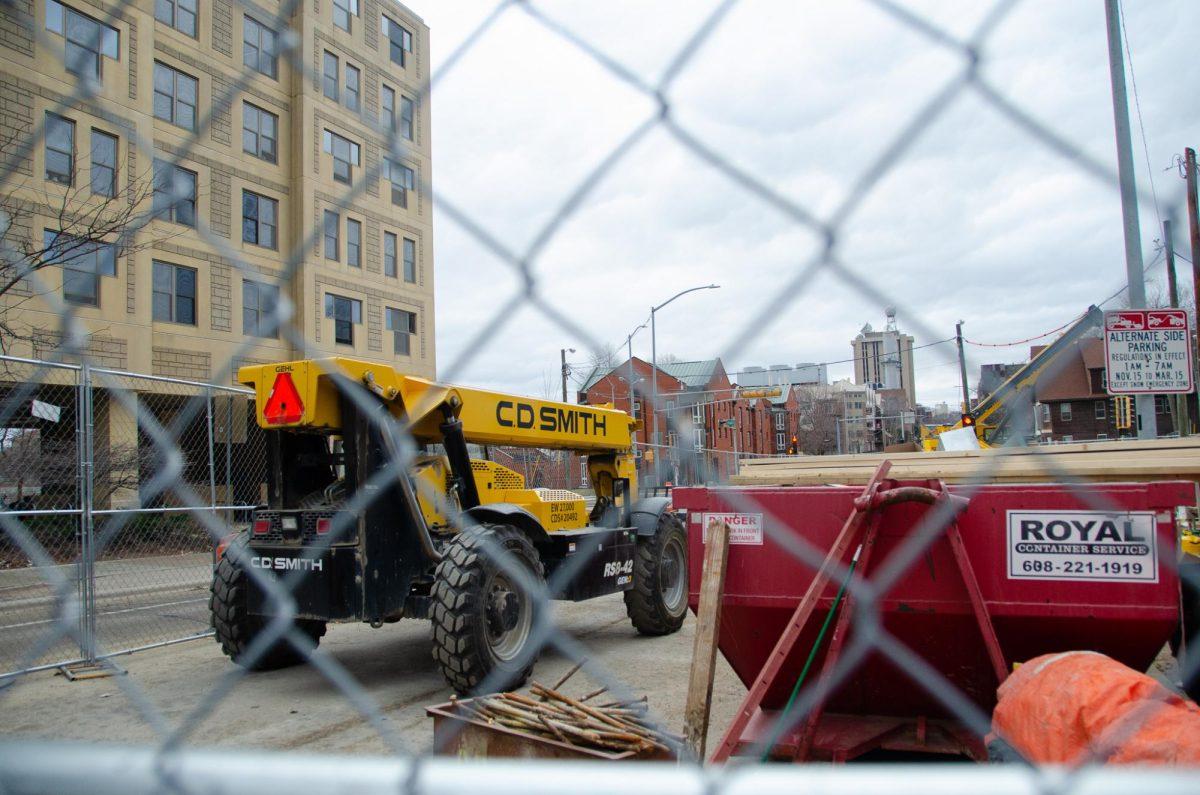At first glance, any measure aimed at improving the already shoddy, almost inhumane conditions of state prisons seem well-reasoned. Generally, those incarcerated are immediately neglected by both the American public and government.
They’d been given their shot to lead productive lives within the boundaries of society and had failed, therefore somehow justifying the squalor in which inmates are forced to serve out their sentences. As such, an investment designed to make such an establishment more livable and suit the needs of those thrown to the wayside feels like the right thing to do.
But, investing more money into a system which many argue unfairly targets people of color does little to solve the issues sprouting from our current justice system, in fact, an argument can be made that it makes the problem worse.
Dane County Board approves plans for new $76 million jail amid protests
The Dane County Board of Supervisors reached an agreement by vote Nov. 21 to approve a $76 million prison renovation of the top two floors of the City County Building in Madison. Supporters of the investment assert that it’s not the job of the Board of Supervisors to pass judgement on the judicial process, but rather it’s their responsibility to uphold and maintain the prisons as required by the state, including County Board Chair Sharon Corrigan.
“The county board doesn’t get to decide who goes in the jail or how people get sentenced. But we are required by the state to maintain a jail,” Corrigan said. “We are obligated to provide a safe, humane space for inmates. There’s no way around it. And we are reducing the number of beds in our jail [system] by nearly 100. So continuing to drive down the jail population isn’t a choice. We have to do it to make this new facility work.”
Corrigan makes an excellent and logically sound argument. Prisoners deserve humane conditions, they’re no less human than you or I, and rationally, conditions of solitary confinement and hellish living space do not work well as rehabilitation techniques.
But, in the context of Wisconsin, whose criminal justice system is arguably among the worst in the country when it comes to incarcerating African American men, investing in a system that perpetuates a problematic pattern is the wrong measure. According to a study conducted by the University of Wisconsin-Milwaukee, Wisconsin incarcerates a higher percentage of its African American men than any other state in the country, and by a sizable margin.
Gap in prison, university spending reveals questionable priorities
At a staggering rate of 12.8 percent, or 1 in 8 African American men, Wisconsin’s incarceration rate is a full three percent higher than the second worst state in Oklahoma, and a full six percent higher than the national average. What’s more, according to data collected by the Wisconsin Department of Corrections, those convicted of a crime have a 37.5 percent chance of being re-incarcerated within three years of their release from prison.
The data is clear, our prison system doesn’t need more money, but programs that aim to prevent a rising prison population do. Investing in affordable housing, mental health services, coalitions tasked with aiding employment following prison release and a reevaluated parole system would be a far more effective and long term solution as opposed to a temporary patch-up of a run down prison that could benefit from housing less inmates in the first place.
M Adams, an organizer for Freedom Inc., perhaps outlined it most blatantly.
“Jail is for punishing people. You shouldn’t be punishing people because they are homeless. You shouldn’t be punishing people with mental health issues because they have mental health issues,” Adams said. “I’m sorry, somebody who is locked in a cage and is suicidal, they aren’t going to care if the new paint is yellow or blue. They won’t care if there are bars or a concrete door. It won’t save people’s lives.”
U.S. prison system’s disproportionate emphasis on punishment is unethical
The elegance contained in such a blunt statement is the sometimes hidden truth of prison reform: Energy should be spent improving the justice system so as to prevent the trend of reincarceration and unbelievably lopsided racial demographic of America’s prison population. The goal should be to shut down prisons due to low inmate totals. There’s something ironic about renovating an area where close to 38 percent of convicts will end up again, it’s almost as though legislators are aware of the reincarceration problem, but won’t take significant measures to reverse the pattern long term.
Lucas Johnson ([email protected]) is a sophomore majoring in journalism.





















